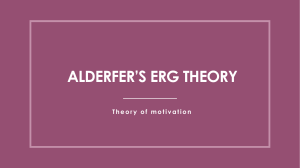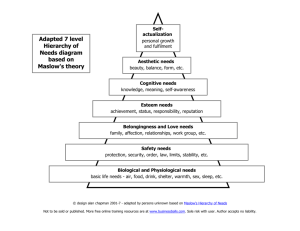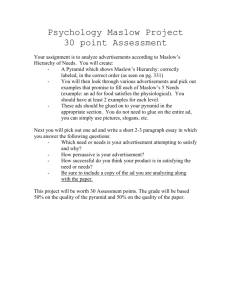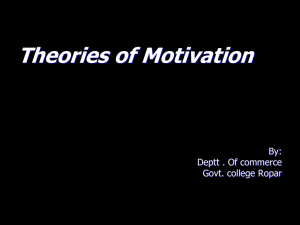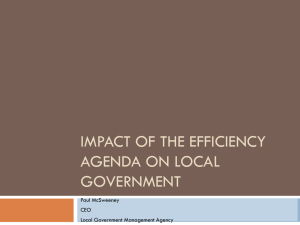Part2 - leadershiporganizational
advertisement
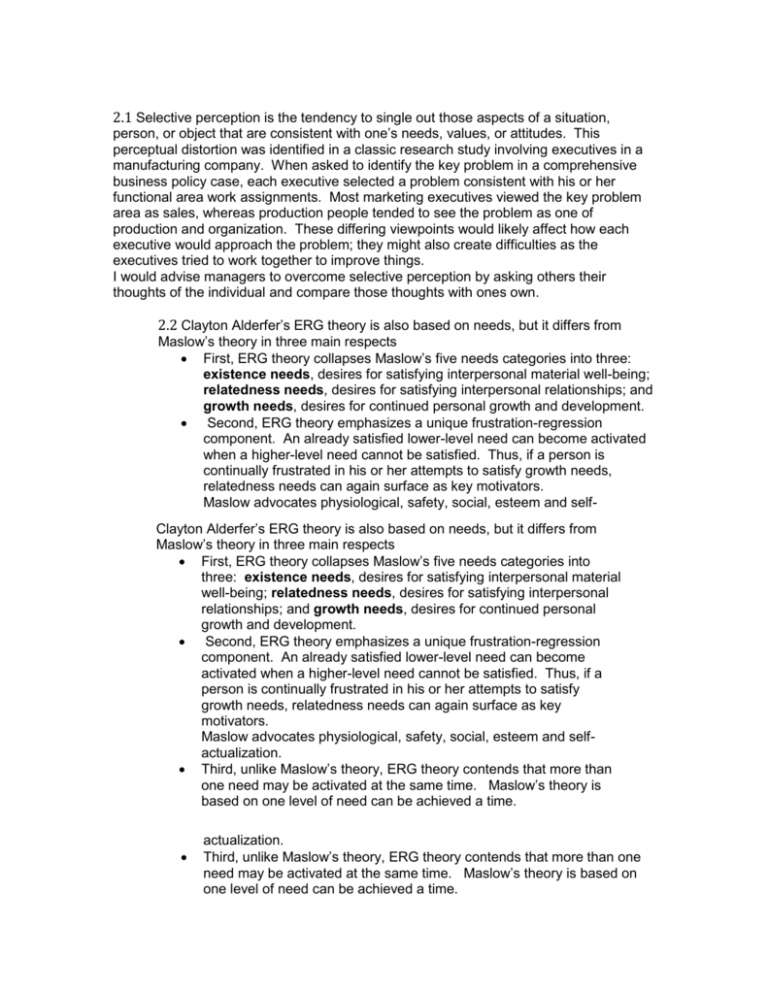
2.1 Selective perception is the tendency to single out those aspects of a situation, person, or object that are consistent with one’s needs, values, or attitudes. This perceptual distortion was identified in a classic research study involving executives in a manufacturing company. When asked to identify the key problem in a comprehensive business policy case, each executive selected a problem consistent with his or her functional area work assignments. Most marketing executives viewed the key problem area as sales, whereas production people tended to see the problem as one of production and organization. These differing viewpoints would likely affect how each executive would approach the problem; they might also create difficulties as the executives tried to work together to improve things. I would advise managers to overcome selective perception by asking others their thoughts of the individual and compare those thoughts with ones own. 2.2 Clayton Alderfer’s ERG theory is also based on needs, but it differs from Maslow’s theory in three main respects First, ERG theory collapses Maslow’s five needs categories into three: existence needs, desires for satisfying interpersonal material well-being; relatedness needs, desires for satisfying interpersonal relationships; and growth needs, desires for continued personal growth and development. Second, ERG theory emphasizes a unique frustration-regression component. An already satisfied lower-level need can become activated when a higher-level need cannot be satisfied. Thus, if a person is continually frustrated in his or her attempts to satisfy growth needs, relatedness needs can again surface as key motivators. Maslow advocates physiological, safety, social, esteem and selfClayton Alderfer’s ERG theory is also based on needs, but it differs from Maslow’s theory in three main respects First, ERG theory collapses Maslow’s five needs categories into three: existence needs, desires for satisfying interpersonal material well-being; relatedness needs, desires for satisfying interpersonal relationships; and growth needs, desires for continued personal growth and development. Second, ERG theory emphasizes a unique frustration-regression component. An already satisfied lower-level need can become activated when a higher-level need cannot be satisfied. Thus, if a person is continually frustrated in his or her attempts to satisfy growth needs, relatedness needs can again surface as key motivators. Maslow advocates physiological, safety, social, esteem and selfactualization. Third, unlike Maslow’s theory, ERG theory contends that more than one need may be activated at the same time. Maslow’s theory is based on one level of need can be achieved a time. actualization. Third, unlike Maslow’s theory, ERG theory contends that more than one need may be activated at the same time. Maslow’s theory is based on one level of need can be achieved a time. 2.3 Managers versus Leaders A key way of differentiating between the two is to argue that the role of management is to promote stability or to enable the organization to run smoothly, whereas the role of leadership is to promote adaptive or useful changes. Persons in managerial positions would be involved with both management and leadership activities, or they could emphasize one activity at the expense of the other. Leadership is the process of influencing others to understand and agree about what needs to be done and how to do it, and the process of facilitating individual and collective efforts to accomplish shared objectives. 2.4. (TCO A) Organizational Behavior is just common sense and has little relevance for managers today. Discuss this statement giving examples to support your answer. (Points : 30) False. See p. 4 of textbook that OB is a science. Tools such as LSI and OCI are available to help give direction to where the member and organization is heading. 2.5 As a manager, I would be specific, use examples of situations that made me give such a feedback. Citations of incidents would be a good way of communicating whether the commendation is a praise or an area that needs improvement. I would follow the guidelines of the organization if provided, such as the US Navy in rating rating a Sailor. I would get the facts validating or negating what is heard over the grapevine. I would get gather evidence from both sides if there are conflicting theories. I will not overload the recipient with information and be conscious of what the respondent can take in based on body language. 6. (TCO D) Identify the five stages of team development, and explain what happens at each stage. Give a specific example from your own experience to highlight one of the stages. If you have no team experience, utilize the case study you completed in connection with same. (Points : 20) The five stages of team development are as follows: 1. Forming stage - members are interested in getting to know each other and discovering what is considered acceptable behavior. Determine the real task of the group and defining group rules. 2. Storming stage - hostility and infighting may occur, coalitions may form as individuals compete to impose their preferences on the membership group to achieve a desired status position. Member's expectations at this point must be clarified. 3. Norming stage - the group begins to come together as a coordinated united but difficulties may emerge as minority points of view, deviations from group directions and criticism may be discouraged because members are fraternizing. 4. Performing stage- a mature, organized, and wellfunctioning group emerges; the group is able to deal with complex tasks and handle internal disagreements in creative ways. The group structure is stable and the members are motivated by group goals and are generally satisfied. You can imagine the Seals that led the mission to kill Bin Ladin. Despite the team members' differences, they were able to function and execute the mission that was expected. 5. Adjourning stage. The group is able to disband, if required, when the work is finished. When I was part of Navy Customs Mission India, we regressed after we trained the incoming mission to do the job and getting ready to get back to the stateside. Some wanted to stay, but the mission is over for that group and had to disband. Service members were welcome to join other missions or sign up for similar missions as well.

